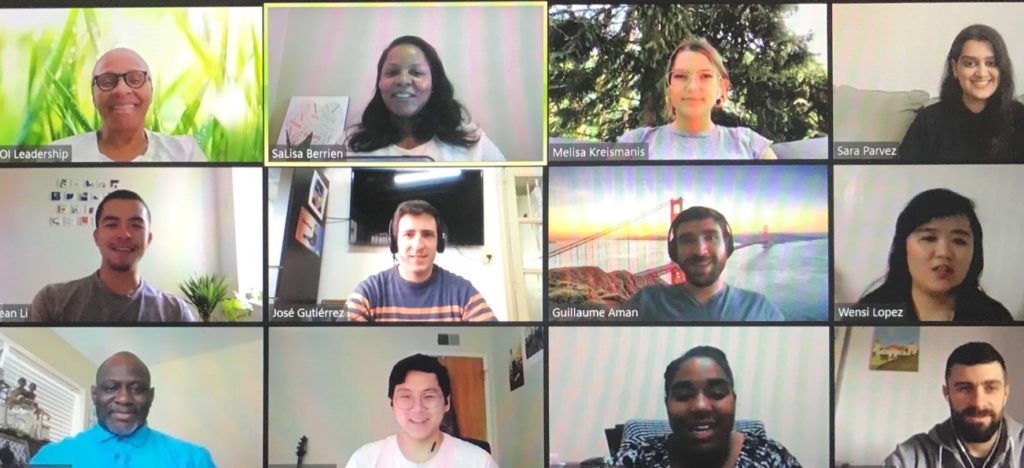From her childhood experiences to her company’s technology, SaLisa Berrien’s life has a consistent throughline: our lives are shaped by the people around us, and collaboration is key to success.
Berrien is from a small Pennsylvania town, where her family experienced energy poverty. As an adult, she went into the energy industry—a decision, she explains, that she didn’t realize was fueled by her previous experiences with energy.
She worked for several utilities and then a few cleantech startups. At the last company, she realized the importance of providing customers customization, of actually “meeting them where they’re at” and with what they need.
Berrien founded COI Energy in 2016 to create a “win-win-win-win for businesses, the environment, disadvantaged communities, and the electric grid.” The company answers a persistent climate issue: the fact that commercial buildings waste up to 30 percent of the energy they consume.
COI Energy works with businesses to reduce and monetize their buildings’ energy use, offering highly customizable capabilities. The startup uses a year of historical information plus real-time data to determine where a customer is wasting energy and then collaborates with them to set parameters that can be used to reduce their intake when they’re approaching high levels, such as adjusting the building temperature or production flexibility.
If this technology was utilized at scale, by 2026 it could reduce power consumption in business buildings from 87,600 GWh/year to 43,800 GWh/year, according to Berrien, which would mean avoiding 26.3 million metric tons of carbon dioxide equivalent.
Here’s why reducing usage peaks is good for the grid: once utilities see their customers using a certain amount of energy, they have to make sure that quantity is available at any given time. Minimizing peaks means that less capacity has to be on hand, which makes it easier for the grid to rely on cleaner energy sources.
“A great example of what our platform solves for is the current electric grid crisis in Texas,” Berrien explains. “Utilizing a platform like ours could have helped the state of Texas avoid the rolling blackouts while improving efficiency of the buildings on the platform.”
By reducing their energy use during peak times, businesses can actually make money. Under COI Energy’s model, part of this profit goes to the customer, and another portion goes to NGOs that are supporting clean energy projects in disadvantaged communities. These projects include community solar, assistance with electric bills, weatherization, and more.
“What we’ve developed and deployed is a digital energy-management platform that detects, prevents, and eliminates energy waste,” Berrien says. “And then we convert that waste to support the electric grid, improve efficiency in buildings, and support disadvantaged communities that are most negatively impacted by climate change. Climate is at the forefront of everything we do.”

The company’s philosophy of mutual responsibility is baked right into its name—COI stands for “circle of influence.”
“What I believe is that we don’t get to where we are on our own—it’s because of the people around us, either for good or bad,” Berrien explains. “COI has arrived at this place because of the partners and the team we have with us. They have helped us propel forward.”
As a woman founder of color, Berrien says her circle of influence has been key in overcoming the roadblocks and racism that impact minority founders, including inequitable treatment from potential investors. She likens her experience to a race where she starts a mile behind the other participants, and yet no one realizes the magnitude of her accomplishment when she crosses the finish line.
Her advice for other founders of color is to find the people and organizations that will partner with you to help you get past that finish line.
“This has been our journey, this has been our life, we always have to prove ourselves—my parents told me that I have to be 10 times better to even show up at the game,” Berrien says. “I can see why you get a lot of founders of color who just drop out of the race. For me, I recognize the bigger picture of what I’m trying to do and the positive impact it will have on the world, so I don’t give up, I figure out another way. That has been about partnering with organizations like Greentown Labs that help elevate our voice.”
COI Energy is currently raising its seed round, and its team includes seven full-time and 10 part-time employees. Over the next year, the startup intends to triple its sales and add new features to its platform, according to Berrien.
Berrien and her team have been active in the Greentown community since joining in September 2020. Berrien says she finds the workshops and various community groups valuable, and she even helped launch a battery and smart grid community group where members can share advice, ideas, and connections.
“It was really important for us to be in a circle of founders, partners, and thought leaders in a space where we’re trying to change the face of the industry,” Berrien says. “There’s no better place for that than being in the Greentown community. That’s the message that I have for any founders that are in the green, clean, carbontech space.”


